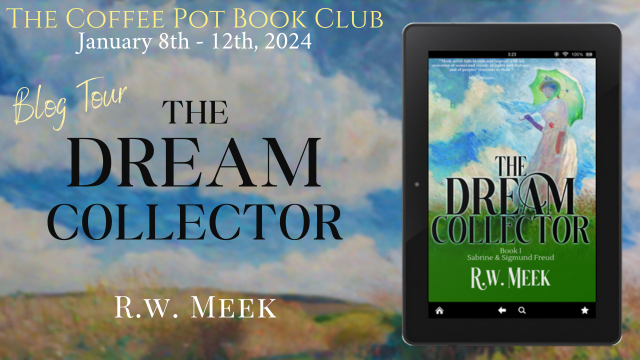The Dream Collector immerses the reader into the exciting milieu of late 19th Century Paris when art and medicine were in the throes of revolution, art turning to Impressionism, medicine turning to psychology. In 1885, Julie Forette, a self-educated woman from Marseilles, finds employment at the infamous Salpêtrière, hospital and asylum to over five thousand disabled, demented and abandoned women, a walled city ruled by the famed neurologist and arrogant director, Dr. Jean-Martin Charcot.
Julie Forette forms a friendship with the young, visiting intern Sigmund Freud who introduces her to the altering-conscious power of cocaine. Together they pursue the hidden potential of hypnotism and dream interpretation. After Freud receives the baffling case of the star hysteric, Sabrine Weiss, he is encouraged by Julie to experiment with different modes of treatment, including “talking sessions.” Their urgent quest is to find a cure for Sabrine, Princess of the Hysterics, before Dr. Charcot resorts to the radical removal of her ovaries.
In Paris, Julie finds a passion for the new art emerging, Impressionism and Post-Impressionism, and forms friendships with the major artists of the period, including Pissarro, Monet, and Degas. Julie becomes intimately involved with the reclusive Cezanne only to be seduced by the “Peruvian Savage” Paul Gauguin. Julie is the eponymous ‘Dream Collector’ collecting the one unforgettable, soul-defining dream of the major historical figures of the period.
The decipherable power of the Rosetta Stone intrigued me. How for millenniums the strange hieroglyphs painted on Egyptian tomb walls were considered unreadable, a mystery buried with the Pharaohs, until the Rosetta Stone supplied the code, and inserted meaning to what seemed only fanciful imaginings. I kept wondering if dreams, whether laughable, weird or lunatic, could be deciphered. What if dreams were, like hieroglyphics, nothing less than pictograms, a parade of symbols that, when gathered together, told hidden stories? Suppose the scenes in dreams, which appeared disconnected, vague and absurd, were quite rational—if you had a Rosetta Stone to interpret them.
So my new experiment came to be: collecting dreams.









No comments:
Post a Comment